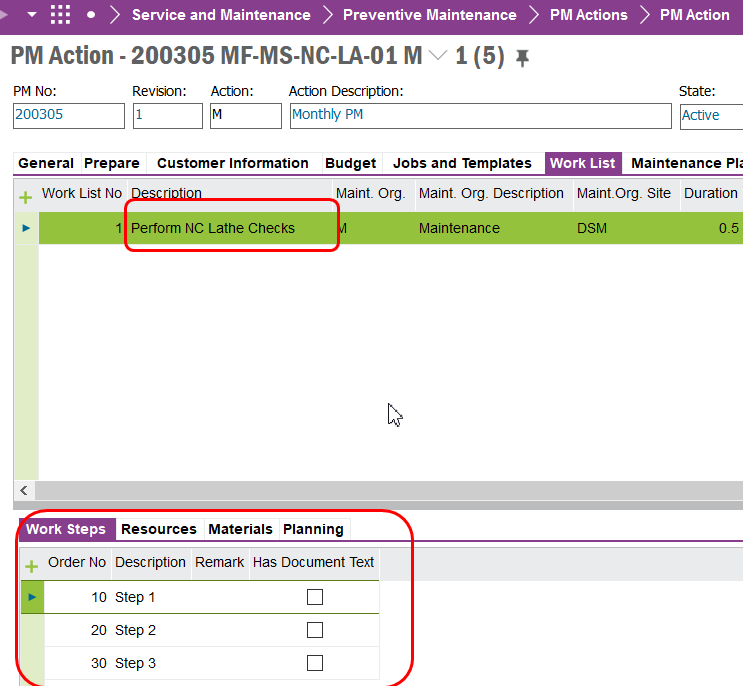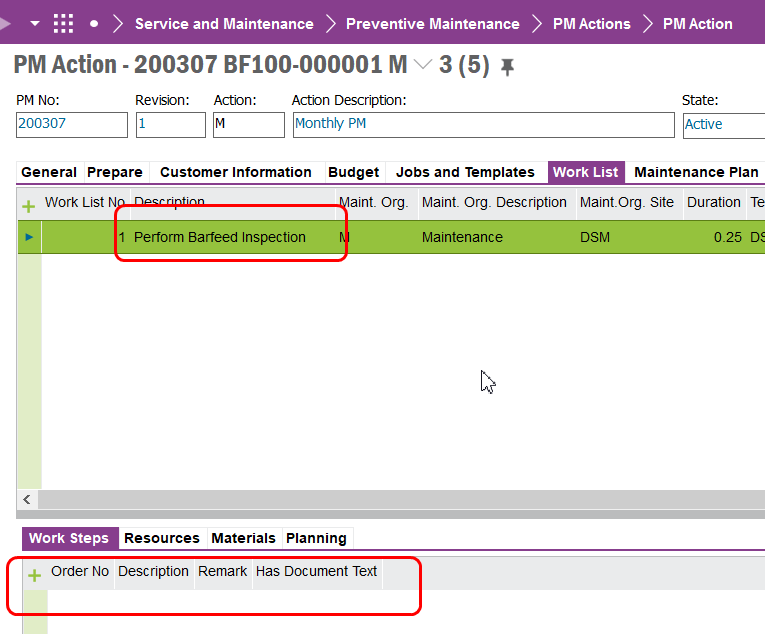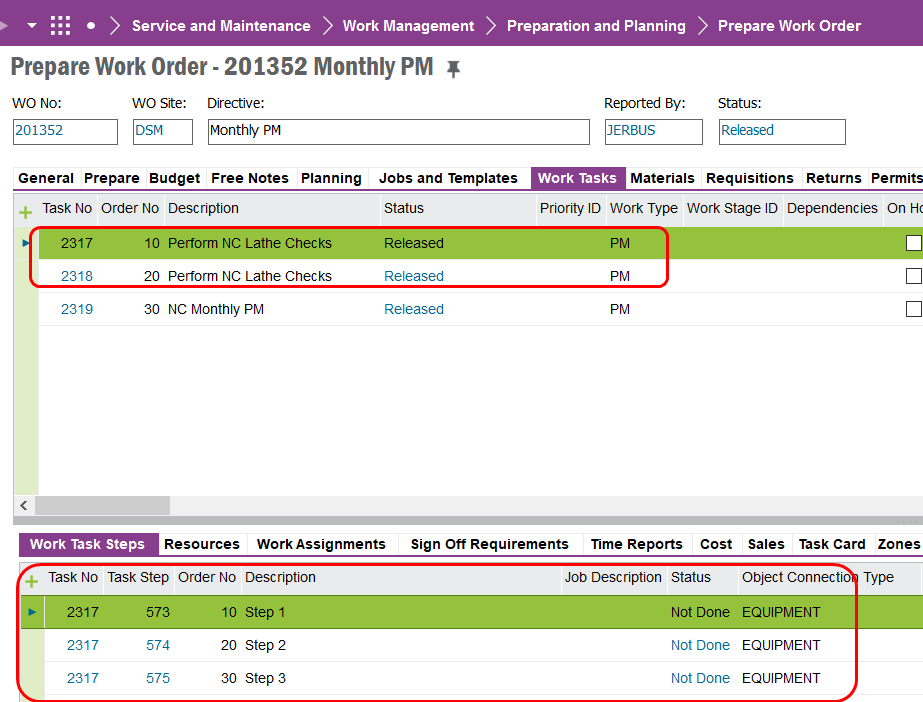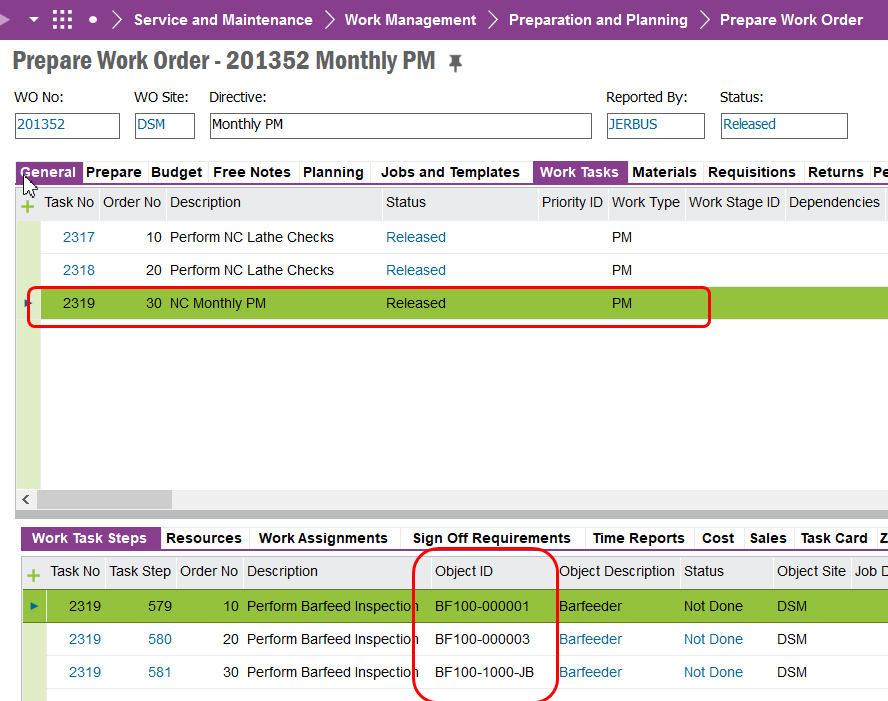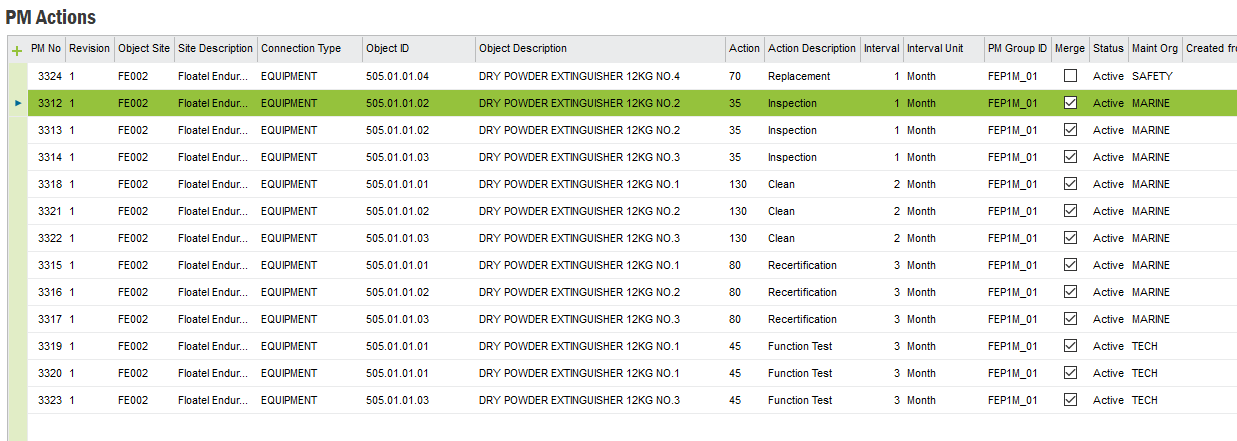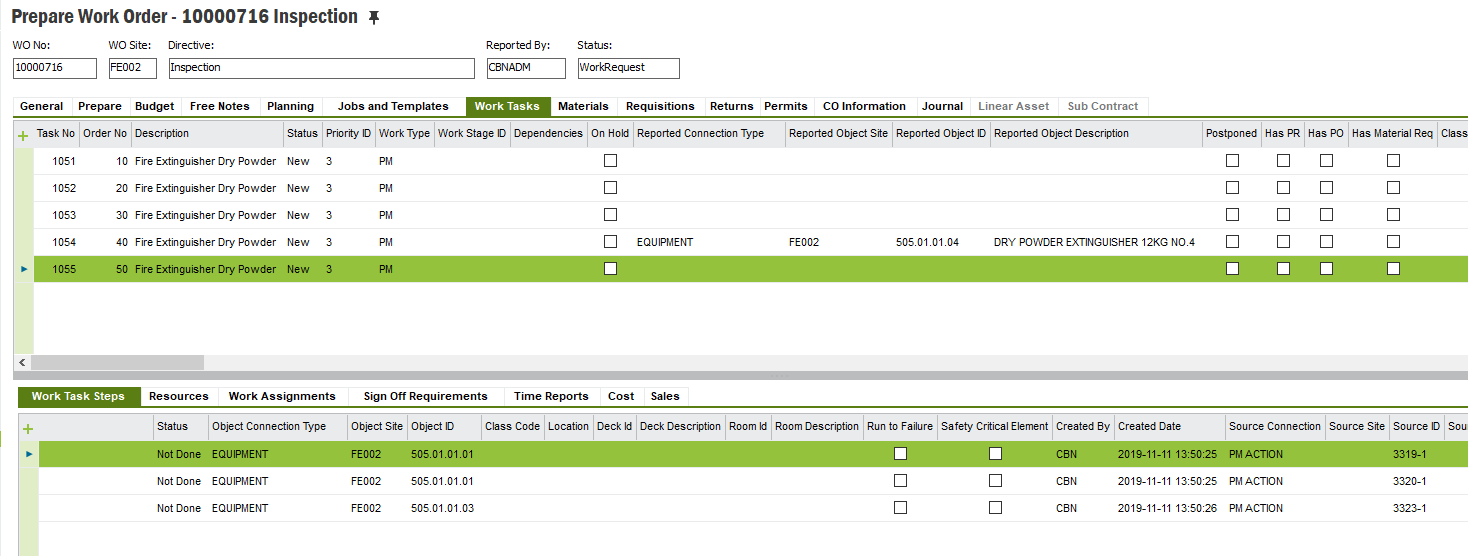Hi,
In the Maintenance Module in IFS10, PM Action, we will use the PM Group Id and Merge function frequently. What are the triggers that determines if there will be more than one Work Task?
Normally the merge function would give you one Work Task with several steps. But there are exceptions.
I have tried with different intervals; that generates more than one Work Task (and not all as steps on one Work Task)
I have also tried different work task templates, maintenance org., priority, actions…
Question is which settings would always generate a new (an additional) work task when we use the Merge function on a PM Action?
kind regards
Christian






